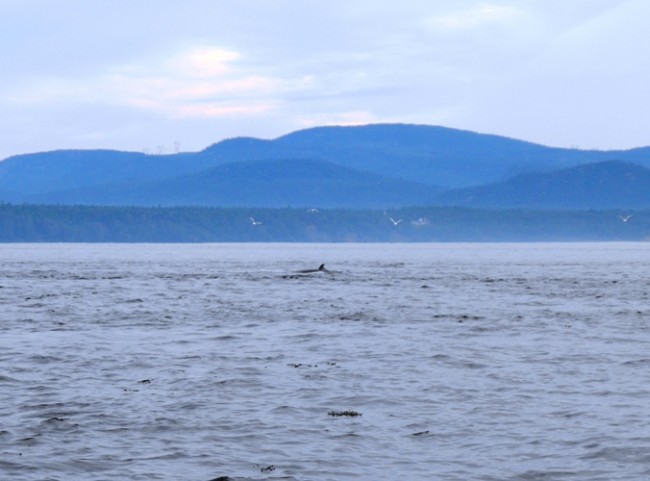I saw my first whale when I was six years old. I was on the ferry between Vancouver and Victoria, British Columbia and I spotted a whale, slowly moving through the water.
I remember my excitement, not wanting to take my eyes off of the whale as its back broke the surface of the sea, gliding along beside the ship. Within a few minutes, the whale disappeared quietly into the deep of the ocean and I didn’t stop chattering about the experience with my parents for the rest of the day.
I like when I can act like a kid, becoming giddy and excited when I have new experiences during my travels. Climbing into a zodiac and heading out into the St. Lawrence Seaway brought me back to being a six year old again.
The Quebec maritime region is a vast area of 280,000 square kilometres, home to two mountain ranges, the mighty St. Lawrence River and 13 species of whales. Every summer, the whales return to this area, happy to indulge in the massive amounts of krill and capelin found in the St. Lawrence and become the focus of many traveller’s cameras.
The heart of whale watching in the Cote Nord region is Tadoussac. This quaint Quebecois town is the main access point to the Saguenay – St. Lawrence Marine Park, where whales come to have their summer holiday thanks to the local focus on conservation of the delicate ecosystem.
Despite the warm temperatures on shore, the tour guides dress us in warm jumpsuits since in the middle of the river, the temperature will drop below 10C. As we pile into the zodiac, most of us are nonchalant, enjoying the views of the river and the shoreline, chatting as the boat heads out into the river.
Eventually the boat stops, and the captain cuts the engine. The anticipation grows, as everyone starts looking around for a whale. Someone calls out, pointing out into the distance – and we all swivel around, looking to the water. Is it a whale?
It is! But the brief glimpse is not enough. We wait, hoping for another appearance as we sit, cameras poised, to capture the moment. Another whale surfaces and another. We’re wired and fixated, not wanting to miss a moment. As the zodiac moves to another possible whale area, we get to see more of these massive sea dwellers, hoping to see a blue whale, the largest of the clan. The level of excitement doesn’t fade. We’re hooked on whales and want to see more.
The sun gets lower in the sky and we stop a third time to feed our whale fixation with more attempts to photograph these majestic mammals. As the zodiac heads back into Tadoussac, everyone on board is thankful for the warm jumpsuit and has a wide grin, just like a six year old.
To learn more about whales and the St. Lawrence River:
The Cap-de-Bon-Desir Interpretation and Observation Centre – provides places to watch the whales from shore. The centre’s naturalist divers regularly explore the river bed for plants and sea life, and can be watched live from the centre’s screening room.
The Marine Mammal Interpretation Centre offers documentaries, a unique skeleton collection, marine mammal reproductions and local naturalists who are studying the changing marine environment for the whales


